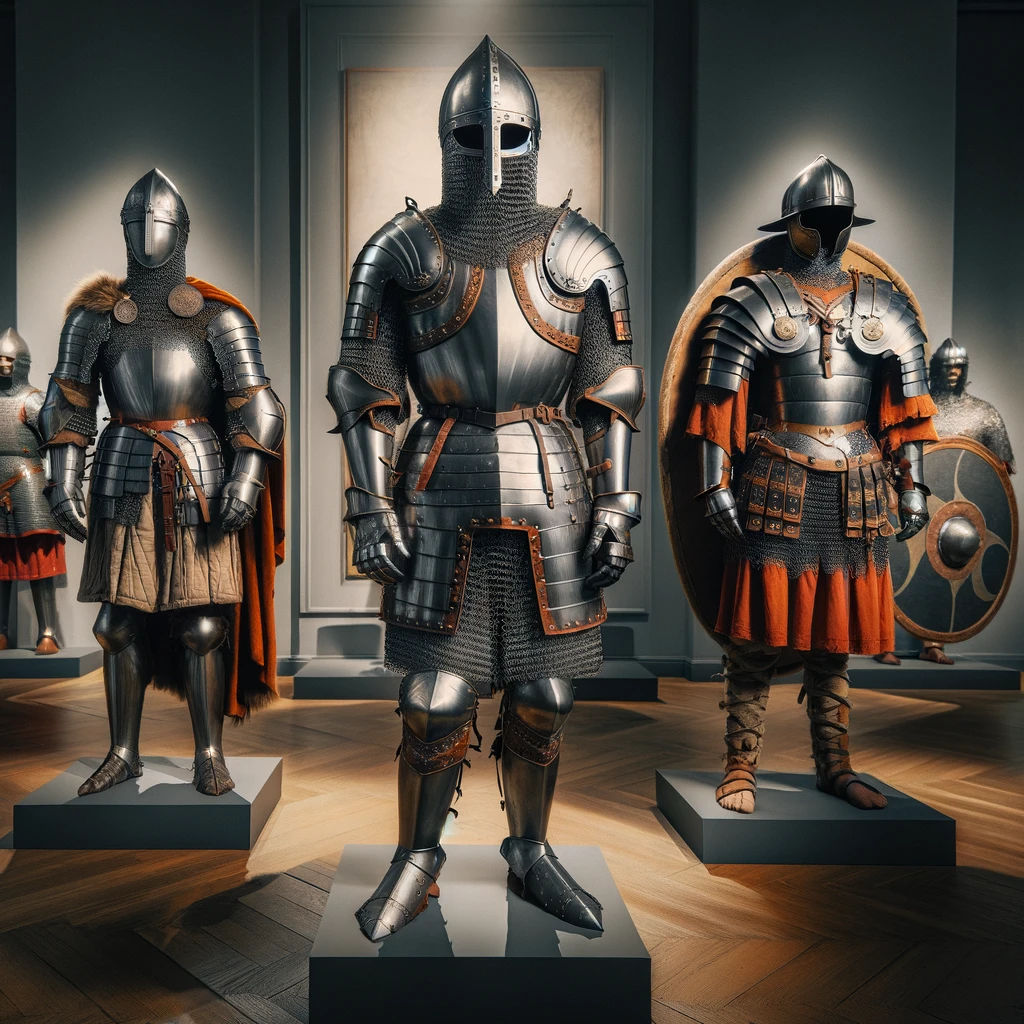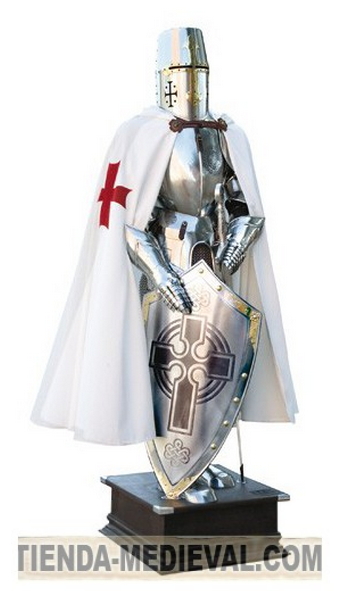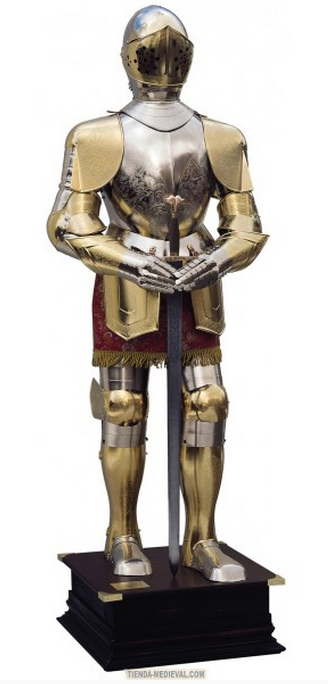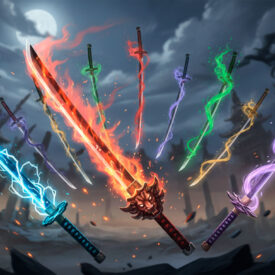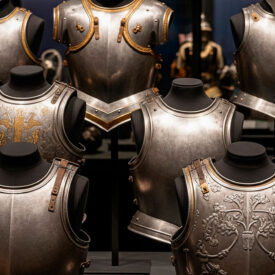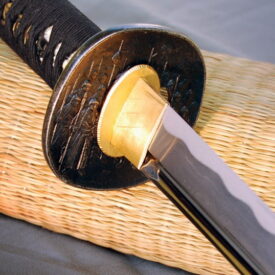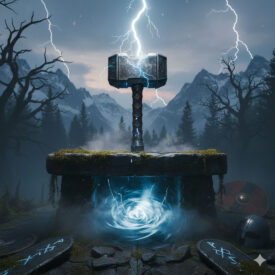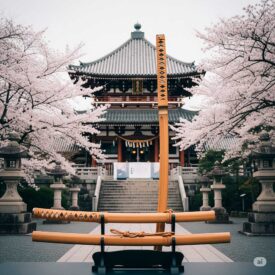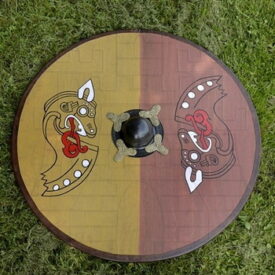When we think of the Middle Ages, images of knights, castles, and of course, armor inevitably come to mind. But beyond their vital role in personal protection during combat, decorative medieval armor transcended the battlefield to become something much more: symbols of power, status, and true walking works of art. Exploring decorative armor means immersing yourself in a fascinating intersection of technology, craftsmanship, and cultural expression.
Combat armor is the set of protections worn by combatants for their defense. Plate steel armor, joined together with hooks, screws, clasps, and nails, attached to the warrior with straps and buckles, began to be used in the 14th century and reached its full perfection by the late 15th. It was in the mid-16th century that it transformed into a ceremonial garment, adorned and embellished with the refinements of sculptural art and metal industries. It significantly declined in the 17th century as firearms were perfected, and since the 18th century, has only been used as a historical relic.
From Necessity to Ostentation: Centuries of Evolution
The history of armor is a constant adaptation to the threats of the battlefield. From the earliest leather protections to chainmail, the main concern was survival. Chainmail, made of thousands of interlinked rings, was the “queen” of protection for centuries. However, the development of more powerful weapons like crossbows and longbows demanded an evolution: the emergence of plate armor.
It was with the refinement of plate armor that its purpose began to diversify. Nobles and kings recognized the immense potential of these creations as a tangible display of wealth and social standing. Thus, ceremonial armor was born—for parade or tournament—where ornamentation took absolute precedence over purely defensive function.
The Message in Metal: Symbolism and Meaning
A decorated armor was a canvas upon which the knight’s identity, lineage, and beliefs were projected. Every engraving, every decoration told a story, serving as a complex visual language in an era when literacy was limited.
Heraldry
Heraldry was undoubtedly one of the most important decorative elements. The family coat of arms, with its colors, figures and symbols, was engraved on the chest, helmet (often with a three-dimensional crest), or shoulder guards. This served not only to identify the knight in battle or tournament, but also to proclaim his lineage and accomplishments.
Religious and Spiritual Symbols
In a deeply religious society, Christian elements were omnipresent. Crosses, depictions of saints (like Saint George or Archangel Michael), or biblical quotations were incorporated to invoke divine protection. Sometimes, small relics were even embedded in the armor as “spiritual shields.”
Chivalric Virtues and Values
Armor also expressed the knight’s ideals. Lions symbolized courage and strength, while eagles represented keenness and vision. Plant motifs like oak (strength) or laurel (victory) were also common. The harp or roses could represent courteous behavior and love.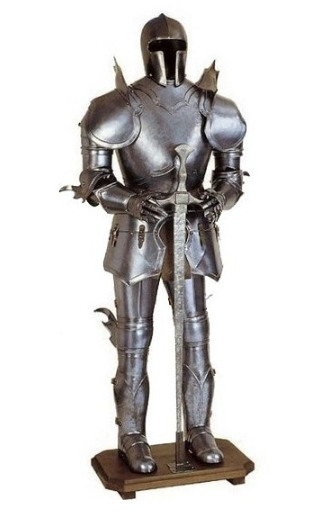
The Art of Forging Beauty: Decorative Techniques
The creation of these visual marvels required master armorers who were true artists of metal. They used a variety of sophisticated techniques to embellish steel:
- Engraving and Chiseling: Carving patterns, coats of arms, or inscriptions directly onto the metal surface. Chiseling allowed for more detailed reliefs.
- Repoussé: Shaping a metal piece from behind to create a three-dimensional relief design on the front.
- Etching: A technique using acids. The acid etched away exposed areas, allowing for intricate and fine patterns.
- Gilding and Silvering: Applying a thin layer of gold or silver to the surface, a clear sign of wealth.
- Damascening: Inlaying threads or sheets of contrasting metals (such as gold or silver on an iron base) to create intricate designs.
- Bluing: A surface treatment that gave the metal a dark blue or black hue, which was not only aesthetic but also protected against corrosion.
- Enameling: Fusing masses of colored powdered glass into cavities of the metal surface to create vivid decorations.
Since ancient times, armors were subjected to different tests to assess their resistance. Those tested with a windlass crossbow were called proofed or bulletproof, while those tested only with arrows were said to be half-proof. From the 16th century onwards, firearms were used to test the resistance of armor, and bullet marks were sometimes used to increase their decorative elements, turning them into the center of a flower, rosette, or other ornament.
Regional Styles: A World of Differences
The decoration of armor also reflected the traditions and tastes of each region:
- Germany: The armorers of Augsburg and Nuremberg were famous for their “Gothic” and “Maximilian” armors with fluting and fine engravings.
- Italy: Centers like Milan and Florence influenced with Renaissance style, incorporating classical motifs and mythological figures.
- France: French armors were known for their elegance, often with floral motifs and prominent use of the fleur-de-lis, a symbol of royalty.
- England: They tended toward more sober decorations, focusing on metal quality. Elements such as the English lion or the cross of Saint George were common.
A Legacy That Endures in Decorative Armor
Today, we can admire these impressive decorative armors in museums all over the world. Examples such as the armor of Henry VIII or Maximilian I are testament to the incredible skill and artistic vision of their creators. These pieces are much more than simple artifacts; they are a window into a past where art, technology, and symbolism merged to create objects that not only protected the body, but also celebrated the status, faith, and spirit of an entire era. If you are passionate about this legacy and want to own a piece of history in your home, you can discover a wide variety of decorative medieval armors and functional ones, or if you are more interested in combat, you can also see pieces of functional armor.
